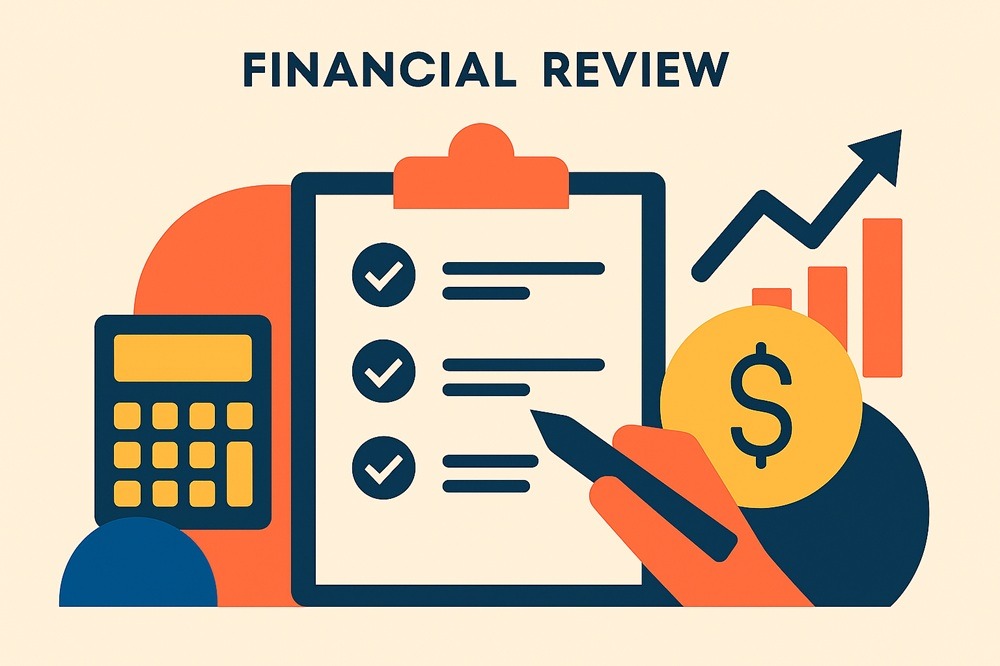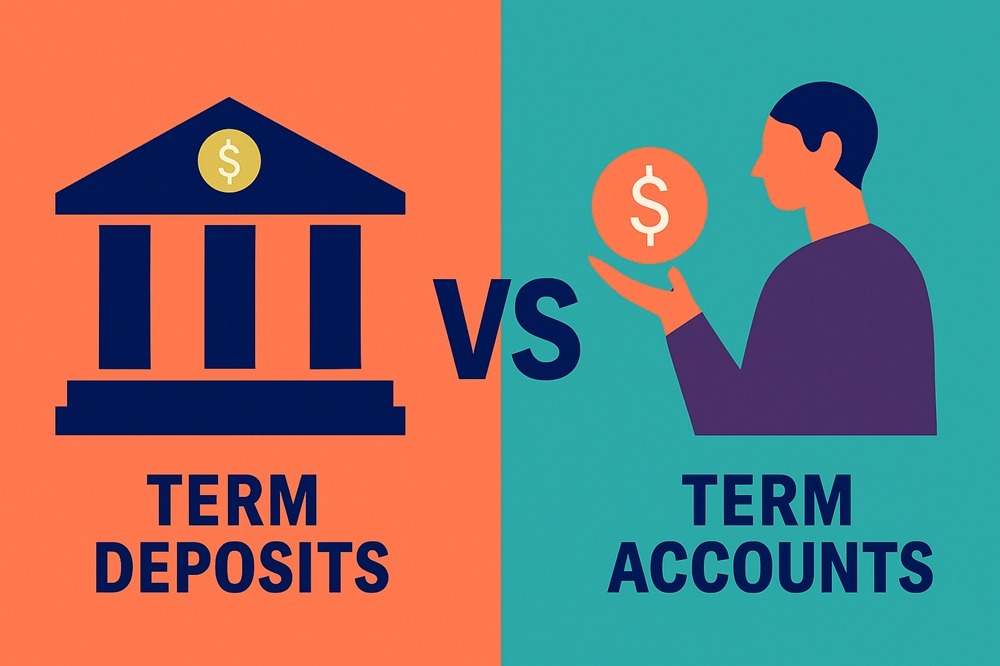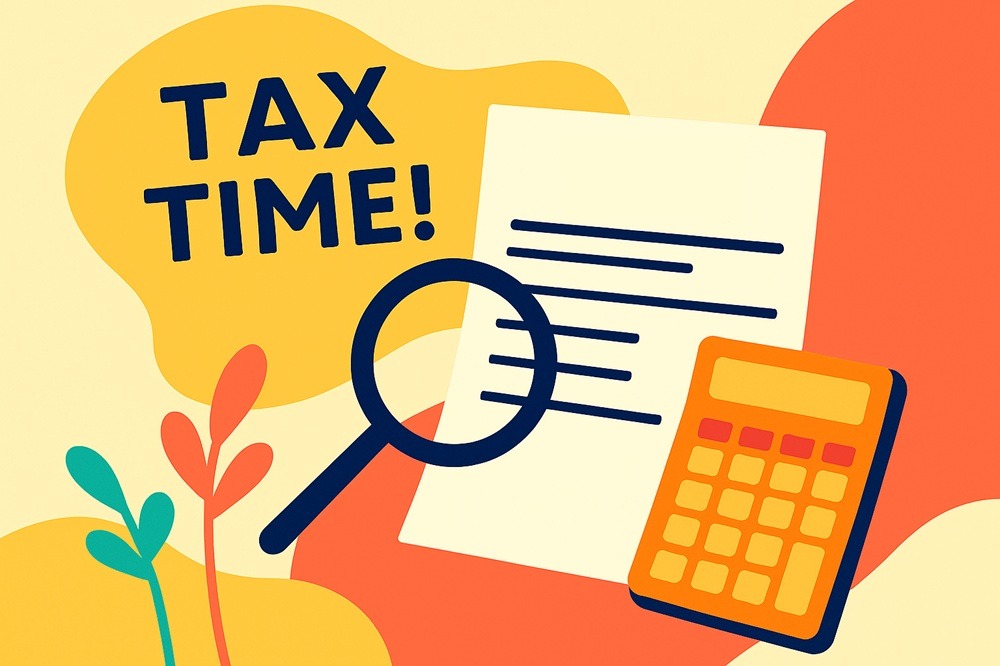
A Practical Checklist for End-of-Year Financial Review
The end of the year often feels like a rush towards the holidays, but the weeks leading up to December are the perfect time for a quick, essential financial clean-up. A few hours spent reviewing your details now can save you money and stress when the new financial year rolls around. This simple checklist will guide you through the often-forgotten administrative tasks that ensure your money is working as efficiently as possible.

Term Deposit vs Term Account
When you're looking for a simple, fixed-rate investment for your cash, you might come across two terms that sound almost identical: a Term Deposit and a Term Account. Don’t let the similar names fool you; these are two completely different financial products with vastly different levels of risk.

Setting Up Your Financial Shock Absorber
We often treat our finances as a simple monthly cycle: get paid, pay bills, save what's left. But in reality, money never flows that smoothly. Life is full of 'lumpy' expenses which are costs that aren't monthly but are absolutely predictable and guaranteed to arrive, like quarterly insurance premiums, annual registrations, or unexpected medical fees. These costs are often too big for your regular monthly budget, but too small or predictable to be covered by your massive, long-term emergency fund. This is why you need a dedicated financial buffer fund.

Tax Time! Don’t Forget Your Investment Income
With the 31 October deadline approaching, it’s a great time to ensure your tax return is complete, particularly if you have investment earnings. While your salary details usually pre-fill, the responsibility for accurately reporting income from assets like rental properties, shares, and cryptocurrency rests solely with you, and the ATO is actively using its advanced data-matching capabilities to check this information. This article walks you through some of the most common types of investment income that people sometimes forget to include

Is Immediate Relief on your Mortgage Worth the Long-Term Cost?
The path to home ownership in Australia keeps getting tougher, forcing buyers and owners to consider flexible loan structures. These options can ease monthly repayments in the short term but come with an important caveat: you’ll pay substantially more interest over the life of the loan. If you’re weighing up a home loan option that defers part of the debt burden to the future, here’s a straightforward look at commonly used structures offering this temporary affordability.

The Real Cost of a 5% Deposit Mortgage
The government's 5% deposit scheme is a fantastic opportunity for first-home buyers, allowing you to enter the market sooner while avoiding Lenders Mortgage Insurance (LMI), which can easily save you $20,000-$30,000 upfront. However, it's important to look beyond this initial saving and consider the long-term trade-offs. Because a smaller deposit means a larger loan, the financial relief of skipping LMI can be quickly overshadowed by the strain of higher monthly repayments and the staggering amount of extra interest you'll pay over the life of the loan.

How to Maximise Your Age Pension
Making the most of the Age Pension isn’t about dizzying formulas or dry legal jargon — it’s about everyday choices that genuinely shape comfort and security in retirement. From turning the family home into an even greater asset, to simple steps like updating how much Centrelink thinks your car is worth, these practical strategies are based on real stories and proven tips that can help retirees enjoy a worry-free retirement, stretch every dollar further, and feel confident about their financial future.

Who Would Your Super Fund Pay?
When you think about your superannuation, you probably focus on growing it for retirement. But have you considered what happens to it if you pass away? It’s a common myth that your super is automatically covered by your Will. In most cases, it isn’t. Your super is held in a trust, and the fund's trustee is responsible for paying it out. To ensure your money goes to the right people, you need to give the trustee clear instructions. This is done by nominating a beneficiary. Let's look at the fundamentals.

Talking to Your Family About Your Will
It's one of those difficult chats we often put off, but talking to your family about your will and estate plan is one of the most important things you can do. It's not about being morbid; it's about being responsible. Having this discussion can prevent future misunderstandings, reduce family conflict, and ensure your wishes are known and respected.

Imparting Financial Habits to Your Children
Teaching children about money is one of the most valuable lessons a parent can offer. It goes far beyond simply giving them pocket money; it’s about shaping their mindset for a financially secure future. By instilling a few core habits early on, you can move beyond basic saving and start building the foundation of a true investor.

August 2025 Market Updates
August 2025 featured a cautiously optimistic global investment climate, with Australia's ASX 200 showing a strong rise driven by solid domestic fundamentals, while the US S&P 500 demonstrated steady resilience after early dips. The Australian residential property market kept growing due to low supply and easing interest rates, with cities like Darwin and Perth leading increases despite ongoing affordability challenges. Inflation in Australia moderated within the Reserve Bank's target range, leading to a cautious interest rate cut aimed at balancing price stability and economic growth. Overall, the outlook signals a measured but positive recovery supported by easing monetary policy and sustained investor confidence, even as global uncertainties and affordability issues persist.

The Basics of Age Pension
The Age Pension is a vital source of income for many Australians in retirement, providing regular payments to help with living costs. Knowing the ins and outs of how it works can make a real and impactful difference to your financial wellbeing.